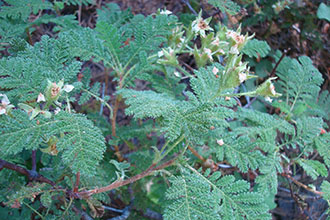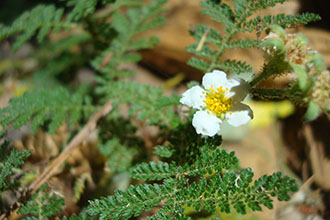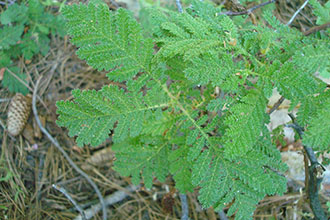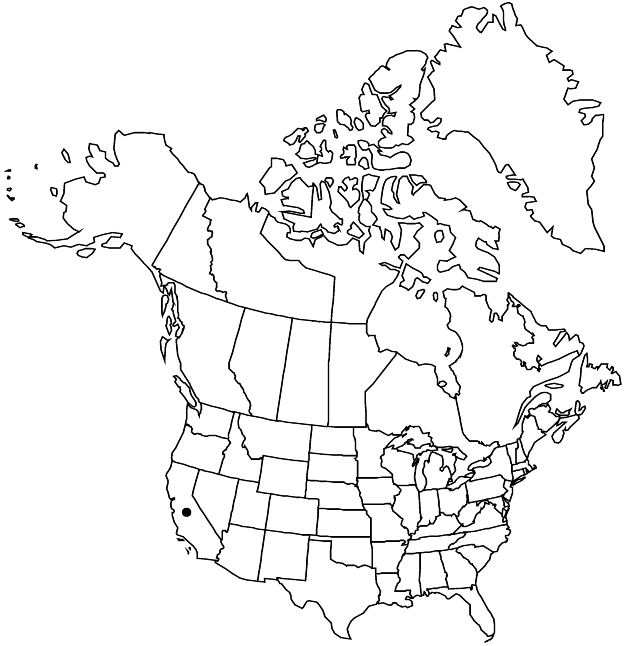USFS Plant Database
Mountain misery grows in a Mediterranean climate, characterized by mild, wet winters and hot, dry summers.
The currently accepted name of mountain misery is Chamaebatia foliolosa Benth., in the Rosaceae, or rose, family. There are no recognized subspecies, varieties, or forms. Chamaebatia australis (southern mountain misery), once described as C. foliolosa var. australis, is now considered a distinct species.
Mountain misery clones form a low-growing layer in open ponderosa pine (Pinus ponderosa) and mixed coniferous forests. Stands occur in patches, providing from 20 to 90 percent cover. In the Challenge Experimental Forest of the Plumas National Forest, density in the mixed coniferous forest is as high as 17,068 stems per acre (42,175 stems/ha).
In California black oak (Quercus kelloggii) forests, mountain misery frequently codominates the understory with whiteleaf manzanita (Arctostaphylos viscida) and greenleaf manzanita (A. patula). (Plant Database)



